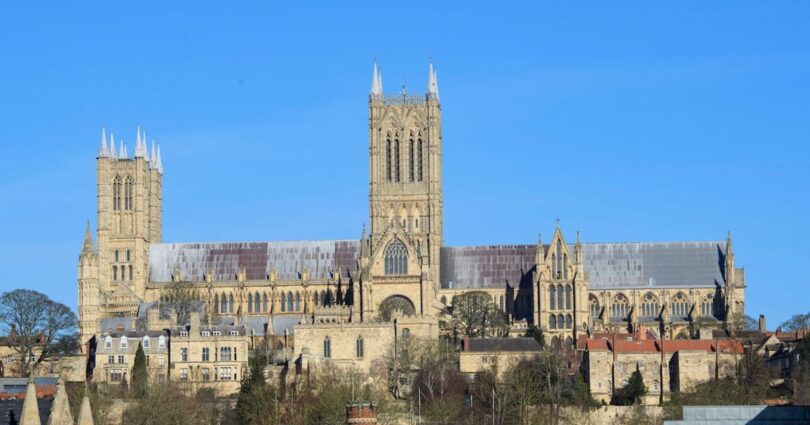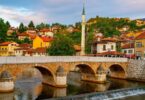It is one of the finest of England’s old historic cities and possibly one of the most overlooked also.
This charming little city lies on the River Witham and is dominated by its magnificent hilltop cathedral, one of the largest in England.
It also boasts many handsome medieval houses, remains of Roman town gates and Norman fortifications. Indeed, it was the Normans who made the biggest mark on this city, leaving behind both the castle and the cathedral.
So you’re planning a visit to this hidden gem, you’ll find everything you need right here. According to visitlincoln.com Lincoln is full of fascinating stories, just waiting to be discovered.
But this fascinating and historic place is bypassed by most visitors to the UK, and that’s a pity, because Lincoln has a colourful past that is preserved in an incredible variety of historic buildings, particularly in the ancient medieval core.
A spokesperson for Visit Lincoln said: « Packed with things to see and do, Lincoln is a destination that everyone can enjoy. With award-winning attractions, great shopping and a wealth of places to eat and drink, this beautiful city makes for the perfect weekend break. »
« As Lincoln is a compact city, you can easily explore on foot. It boasts some of the finest architecture in the country, and a whole host of secrets are hidden within their walls. »
The city of Lincoln in Lincolnshire was described in the famous Domesday Book as a prosperous town with a sizeable population, and its office of mayor, established in 1206, is the oldest in Britain.
Following its integration into the railroad network in 1846, Lincoln became a centre of the iron and steel industry and manufacturing is still important, it’s today best known for its beautifully preserved historic buildings that could give itd better known rivals like York, Oxford and Cambridge a definite run for their money.
William the Conqueror began building Lincoln Castle atop the steep hill that is the core of the city. In 1072 the church followed suit and the magnificent structure of Lincoln Cathedral was begun.
The cathedral is the third largest in Britain, with a vast nave supported by columns of limestone and marble. The stained glass windows set off a wonderful vaulted roof, and the interior boasts intricate carvings in stone and wood. Look for the notorious « Lincoln Imp » carving in the Angel Choir – a stonemason’s joke that has become the official city emblem.
Nestled beside the Cathedral are the ruins of the Bishop’s Old Palace, reminders of a time when the Bishops of Lincoln were among the most powerful figures in the land. Former Bishops of Lincoln include Hugh of Avalon, later St. Hugh, whose tomb is in the cathedral, and Thomas Wolsey, who was Bishop here in 1514 before going on to become a cardinal and advisor to Henry VIII.
The medieval centre of Lincoln is blessed with an abundance of original 14th and 15th-century buildings, as well as a large number of half-timbered Tudor houses. High Bridge is the oldest bridge in England to have houses built upon it. The structure dates from the 12th century, and looks its age in the most complimentary fashion.
Lincoln Castle still functions as a court, dispensing justice as it has for over 900 years. Within its walls you can see one of the original copies of the Magna Carta, signed by King John in 1215. Lincoln has a wide variety of interesting museums, including the Usher Gallery, featuring original poems and memorabilia of Alfred, Lord Tennyson, a native of Lincolnshire.
A Heritage Trail links many of the historic attractions in the city centre, and a leaflet describing the trail is available at the Tourist Information Centre on Castle Hill. The TIC is also the departure point for a variety of fascinating tours of the city, including guided walking tours, open top bus tours, ghost walks, river trips, and horse and carriage rides.
Lincoln city centre is compact enough to walk around yet has so much to explore. Whether you want to go shopping, relax with a cup of tea or dine in style, you can do it in Lincoln. With unique attractions such as Lincoln Cathedral and Steep Hill, culture at Lincoln Drill Hall and The Collection and stunning, waterside restaurants and bars, you will want to stay for longer to discover all of Lincoln for yourself. And the delights of Lincoln don’t stop at the city – it doesn’t take long to reach the Heart of Lincolnshire or even the Lincolnshire coastline.
The city is really easy to navigate and is essentially split into two halves, linked by the aptly named Steep Hill. Don’t be put off by this though – it might be steep but its well worth the walk, as there are many independent and quirky shops to make the journey easier (and your wallet lighter). In fact, Steep Hill itself is a recent winner of Britain’s Best Street Award due to its uniqueness and range of wonderful boutiques. Within the Cathedral Quarter, uphill, lies the more historic side of the city, with it’s beautiful cobbled streets, cosy tea rooms, the majestic Cathedral and the magnificent hilltop Castle.
Downhill is the more modern city centre where you’ll find the busy High Street. Here, large international brands sit side by side with local retailers, giving plenty of choice to the discerning shopper.
Lincoln’s numerous cafes, restaurants and coffee shops will give you the much-needed time to sit and relax after a busy day of shopping and exploring. Further south into the city is the Brayford Waterfront standing on the banks of the River Witham. You can take a tour of the city by boat or just sit and watch the world go by in one of the many bars or restaurants overlooking the water.
Source link








